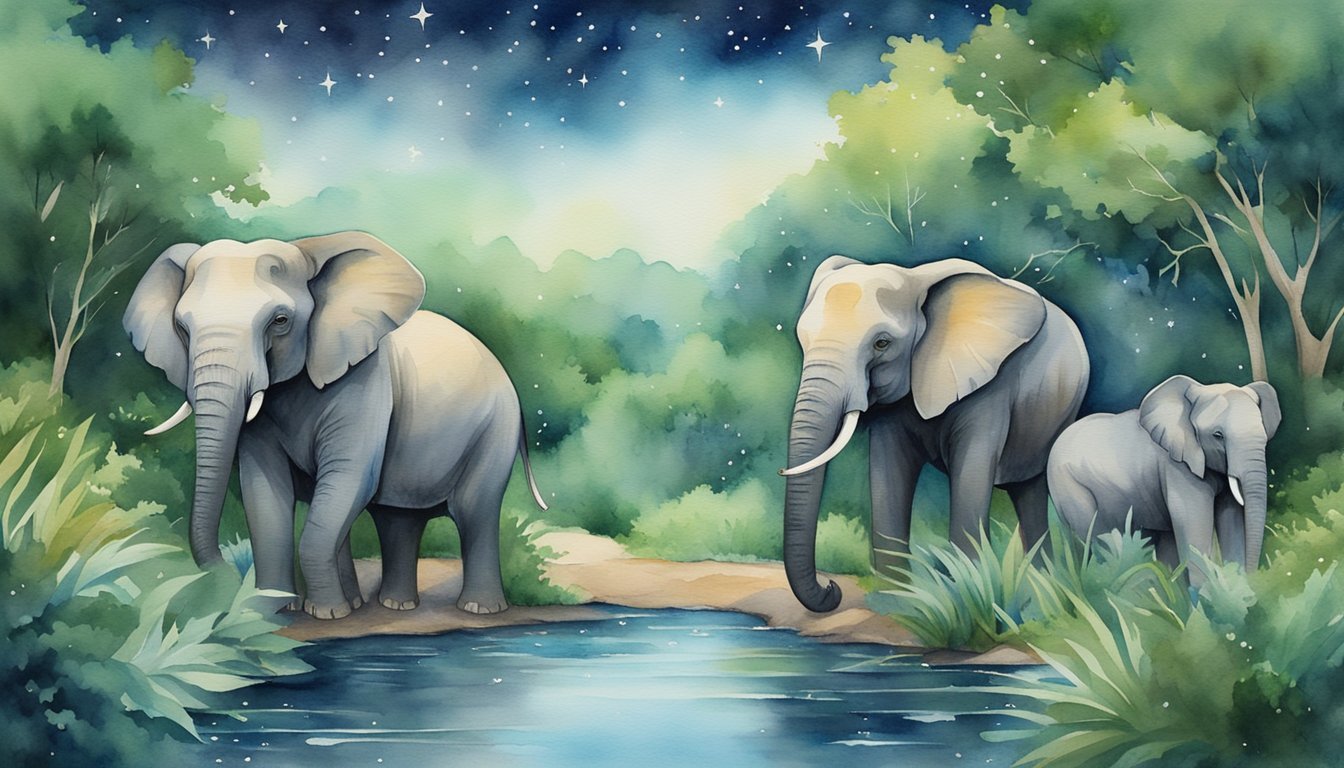Elephant Sleep Behaviors
Elephant sleep behaviors vary greatly between wild and captive environments and are integral to their health and development. They demonstrate complex patterns influenced by the need for safety in numbers and the demands of their large size.
Wild vs. Captive Sleep Patterns
Wild elephants are known for their minimal sleep requirements. They often rest for just 2 to 3 hours daily, generally at night, and even then they may sleep standing up to stay alert for predators. Sleep studies on African and Asian elephants have revealed that while African elephants might rest in shorter spurts, often for about 5 to 30 minutes, Asian elephants have similar patterns. The sleeping habits of elephants can be quite various, with captive elephants typically experiencing longer periods of sleep, ranging from 3 to 7 hours, likely due to reduced stress and absence of predators.
Elephant Sleep Cycle and Health
An elephant’s sleep cycle is not only a matter of daily rest but also plays a critical role in their overall health. The structure of their sleep pattern, including rapid eye movement (REM) sleep, is crucial for memory consolidation and brain health. REM sleep, often associated with dreaming, is a phase when the brain processes experiences and information, reinforcing learning and memory. Despite their size, elephants engage in REM sleep, albeit less frequently than humans do, which suggests their impressive memory may be supported by highly efficient sleep-related processes.
Young Elephants and Sleep
Baby elephants have sleeping habits that reflect their developmental needs. Just like human infants, they require more sleep than their adult counterparts for proper growth and development. Young elephants have been observed to spend more time resting and are more likely to lie down to sleep comfortably, often under the watchful eyes of their mothers or other herd members. This not only ensures the calf’s comfort but also its safety within the protective circle of the herd.
Environmental Influence on Sleeping

Elephants’ sleep patterns are significantly affected by their environment, including various natural and artificial factors, from food availability to habitat conditions.
Natural Habitat and Sleep Habits
In their natural habitat, wild elephants exhibit specific sleep patterns influenced by environmental factors such as temperature, humidity, and solar radiation. They often consume a diet rich in plant matter, which is abundant in the savannas and forests they inhabit. These herbivores have adapted to sleep both during the night and in the brief periods at dawn and dusk to avoid the midday heat. Elephants typically experience REM sleep every three to four days and are known to modify their sleep onset and sleep offset with environmental cues like sunrise and sunset. Trees in the savanna provide both food and comfort, as they can induce restfulness due to lower temperatures and protection they offer.
Conservation and the Impact on Sleep
Conservation efforts impact the sleep of elephants in both positive and negative ways. While efforts aim to preserve natural habitats, factors like habitat loss and the threat of poachers or predators can disrupt the normal sleep patterns of elephants, making them more vigilant and disrupting their typical sleep routines. In captivity, such as within zoos, elephants encounter different environmental cues which can affect their sleep. Adjusting to smaller spaces and lacking usual environmental factors like wind speed or savanna sounds may alter their sleep patterns. Conversely, focused conservation within controlled environments can reduce threats from poachers and predators, potentially leading to more regular sleep patterns.
Elephants’ sleep is a complex aspect of their wellbeing that is delicately balanced with environmental conditions. Understanding how these magnificent creatures rest in the wild provides insights into ensuring they thrive in all settings.

